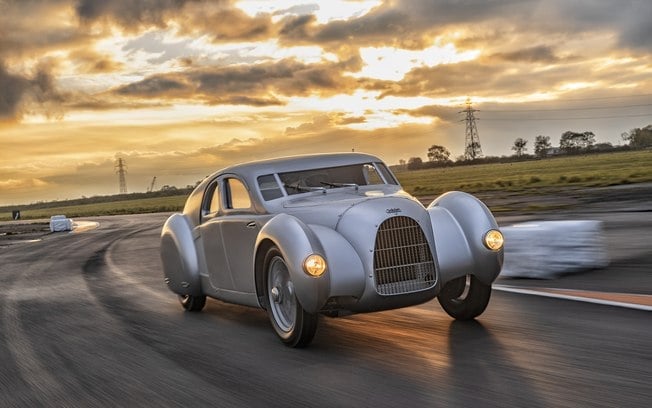While most automakers use this year’s Goodwood Festival of Speed to showcase their latest innovations, Audi surprised audiences by bringing the Auto Union Type 52, a 16-cylinder supercar from the year 1930. The model was never produced at the time, but the German brand decided to recreate it from scratch, using the original development documents.
It was in 2023 that Audi finalized the recreation of the Type 52, based on the historical documents of the early 1930s. The example is inspired by the legendary Silver Arrow cars, a nickname typically given to silver racing cars, which, for example, raced in Formula 1 with the Mercedes-Benz. The vehicle’s design is aerodynamic and includes a cabin for three people.
In 1930, Auto Union, which we know today as Audi, dominated Grand Prix racing with its Silver Arrow cars. Around the same time, they began developing a street version with the same 16-cylinder engine, called the Type 52. That design was put aside in 1935, but the documents and drawings allowed Audi to recreate the car now.
Auto Union was formed in 1932 during the 1929 crisis, with the merger of Audi, DKW, Horch, and Wanderer. In fact, the brand’s logo with the four rings symbolizes this fusion. In 1933, they asked Ferdinand Porsche, who would later found Porsche, to design a race car for the new Grand Prix formula. Thus was born the 1934 Auto Union Type A, the first rear-engined Grand Prix car.
At the same time, they began to develop this model, the Type 52, a sports car for events such as Mille Miglia, a high-duration race that took place in Italy, and the famous 24 Hours of Le Mans, but the project was abandoned in 1935.
The Type 52 was projected to share many components with the Silver Arrow race cars, including a 4.4-liter V16 engine, which produced 199 hp of power and 43 kgfm of torque. The car was designed to reach a top speed of 200 km/h.
The aerodynamic design still included rounded fenders and a large front grille. Unlike racing cars, the Type 52 had a roof, headlights and luggage space, in addition to accommodating three passengers.
The car was planned to weigh around 1,300 kg, using a five-speed engine and gearbox from Grand Prix cars, but with a different suspension. The suspension of the Type 52 was to be longitudinal torsion spring with hydraulic shock absorbers. The fuel tank had 110 liters in the project and is under the seats, in addition to drum brakes on all wheels.
To recreate the Type 52, Audi hired historic racing car specialists, Crosthwaite and Gardiner. During the process, they discovered that Auto Union’s original engineers would have to make several changes to get the Type 52 into production.
The wheelbase had to be lengthened to accommodate the front suspension, engine and transmission. As there were no details about the original color of the car, Audi chose the same Cellulose Silver silver color used in the Grand Prix cars.
Audi has also changed the engine design, using a 6.0-liter V16 from the Auto Union Type C, which generates 519 hp of power. This engine needs a special blend of methanol instead of regular gasoline. The finished car weighs about 1,450 kg, a little more than Auto Union planned.
IN THE PHOTO BELOW, ON THE LEFT SIDE IS THE TECHNICAL SHEET OF THE CAR AS IT TURNED OUT, AND ON THE RIGHT, THE PROJECTION THAT AUTO UNION HAD MADE


